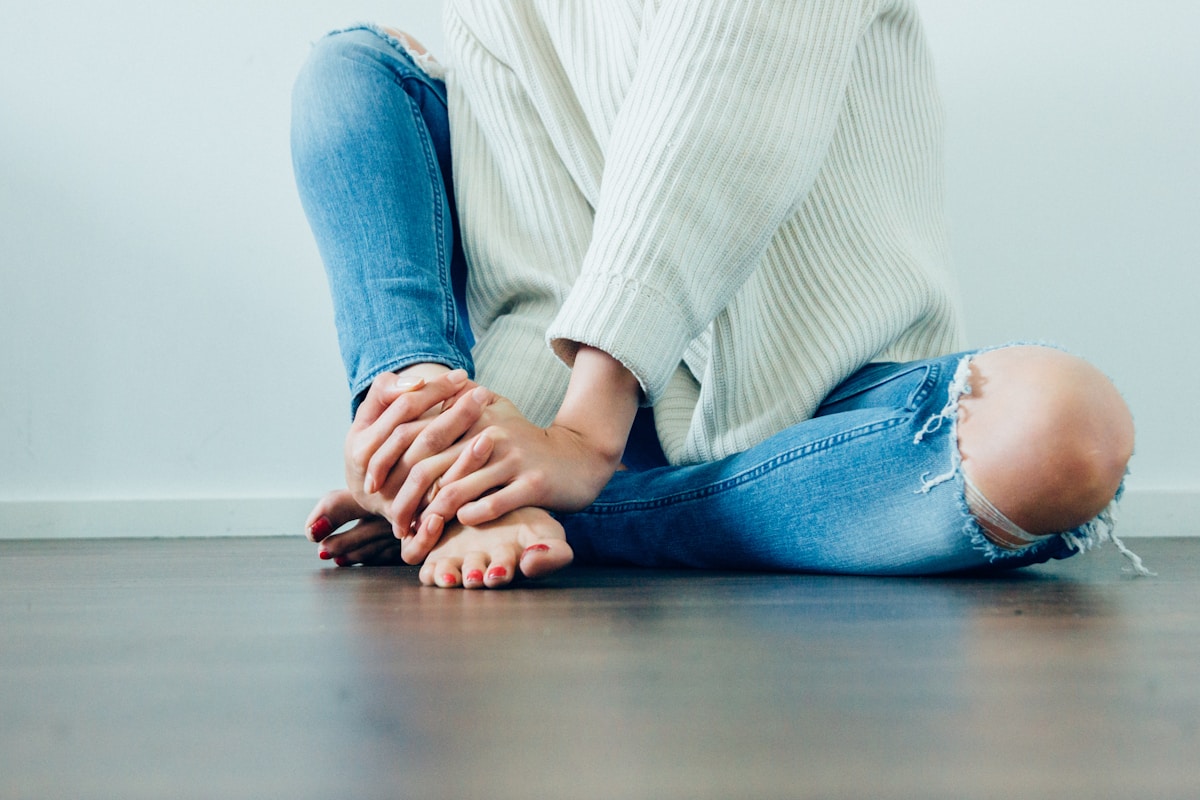If you haven’t heard of plantar fasciitis (PF) it’s because you have been blessed with never having to experience it. If you have, it’s because either you or a loved one has unfortunately had to deal with the stabbing pain that comes with PF and the effect it has on daily living. For many of you who experience PF, it becomes the center of your day. It determines how much you let yourself exercise and what shoes you wear. Then if it becomes unbearable you get a cortisone shot or even surgery. Sometimes those adjustments help, but unfortunately sometimes they don’t. PF affects 10% of the population at some point in their lives, and women are 4 times more likely to be affected by it than men.1 That means that one in ten of the people walking around likely experience sharp, incessant heel pain if they go past their walking threshold for the day. It’s disheartening, especially if you are someone who is on their feet all day - servers, healthcare providers, retail workers, teachers, runners, and the list goes on.

The good thing is there is a solution. I am never one to over-promise a solution when it comes to one’s health, but I have had a 100% success rate with my patients in significantly reducing or completely alleviating their symptoms with the technique outlined below. If done right, you are likely to significantly reduce your symptoms of plantar fasciitis and be able to walk, run, and stand pain free again without injections or surgery.
But first, a little science to understand what’s going on in your foot when you have PF. Plantar fasciitis is caused by inflammation of the plantar fascia, aka the band of connective tissue the spans the length of the bottom of your foot from heel to toe.2 Along with the muscles of the foot, the plantar fascia connects to the triceps surae muscles (aka calf muscles) which together determine your gait (aka how you walk). Many practitioners have found that with PF comes tight calf muscles. When you work to loosen the calf muscles many find this will also relieve inflammation in the plantar fascia.
Along with working with the muscles, a very effective way to relieve symptoms of PF is through the use of moxibustion. Moxibustion (known as moxa for short) is a Chinese medicine technique that uses high quality, dried, and aged mugwort wool and lights it on top of strategic points in order to get a therapeutic effect. In the case of PF, moxa cones are burned on top of the areas on the heel that hurt when pressed (known as ashi points). The cones I recommend are Ibuki moxa cones, which can be purchased either through my site or direct from the distributor.

Below is a step-by-step guide to self-treatment for plantar fasciitis. It requires a jar lid, lotion, and Ibuki moxa cones (found here).
Moxibustion Technique for Plantar Fasciitis
- Rub a dime-sized amount of lotion on the calf.
- Using the jar lid, lightly scrape down the middle of the calf from bottom to top. Continue to scrape with a bit more force each time until you see redness. This will be somewhat uncomfortable, but do not be alarmed - you’re breaking up tissue to allow for blood flow to areas that may not have experienced proper blood flow for quite some time.
- Scrape the inside and outside edges of the calf as well until there is redness. You should feel as if your calf muscle has loosened up a bit, similar to the feeling after you get a massage.
- To find the appropriate ashi points for the moxa cones, use your thumb to feel around your heel where you usually experience pain. Once you find a point that hurts, place a moxa cone on that point.
- Light the moxa cone using a lighter - I recommend a standard lighter rather than a torch lighter since you have more control over the flame. Allow the moxa cone to burn down all the way - you want to feel heat on the point up until your threshold. If you don’t feel any warmth after the first cone, repeat until you feel warmth. This may take anywhere from 2 to 5 cones depending on how tight the fascia is.
- Repeat this nightly for as long as you’re feeling the heel pain.
To learn more about my treatment approach for plantar fasciitis and joint pain in general, visit the Joint Health page. If you have any questions as you’re going through these steps, please reach out to me at sydney@sydneymalawer.com. I will be happy to answer any questions or refer you to an acupuncturist near you that could help you live heel pain free!